
Welcome to Hyperion Records, a British classical label devoted to presenting high-quality recordings of music of all styles and from all periods from the twelfth century to the twenty-first.
Hyperion offers both CDs, and downloads in a number of formats. The site is also available in several languages.
Please use the dropdown buttons to set your preferred options, or use the checkbox to accept the defaults.

from notes by Leslie Howard © 1992
extrait des notes rédigées par Leslie Howard © 1992
Français: Alain Midoux
aus dem Begleittext von Leslie Howard © 1992
Deutsch: Anne Steeb/Bernd Müller
 Liszt: Complete Piano Music Liszt: Complete Piano MusicLeslie Howard’s recordings of Liszt’s complete piano music, on 99 CDs, is one of the monumental achievements in the history of recorded music. Remarkable as much for its musicological research and scholarly rigour as for Howard’s Herculean piano p ...» More |
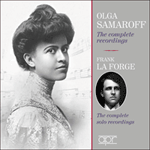 Olga Samaroff & Frank La Forge - The complete recordings Olga Samaroff & Frank La Forge - The complete recordingsOlga Samaroff and Frank La Forge were amongst the earliest pianists to record for the US Victor label, both making most of their discs in the acoustic era before 1925. Samaroff was the greater virtuoso, as can be heard in her famous recording of W ...» More |
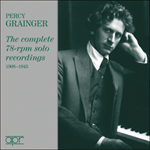 Percy Grainger - The complete 78-rpm solo recordings Percy Grainger - The complete 78-rpm solo recordings‘Here’s something a little bit special to mark the fiftieth anniversary of the death of Percy Grainger … Grainger was a charismatic pianist and a ... ‘The best of Grainger’s shellac efforts retain their vividness and communicative immediacy. Even if Grainger had never met and befriended Grieg, his i ...» More |
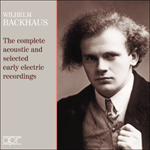 Wilhelm Backhaus - The complete acoustic and selected early electric recordings Wilhelm Backhaus - The complete acoustic and selected early electric recordingsAs one of the great pianists of the 20th century, Wilhelm Backhaus (1884-1969) needs no introduction. He recorded almost continuously from 1908 until his death, but this set, focusing on his earliest recordings, completes APR’s coverage (see also ...» More |
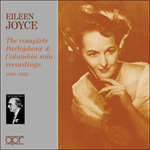 Eileen Joyce - The complete Parlophone & Columbia solo recordings Eileen Joyce - The complete Parlophone & Columbia solo recordings‘Listening to Joyce is strangely addictive. One cannot wait, as it were, to read the next chapter. She shares with Kreisler and Tauber the same unteac ... ‘The quality that comes across in these performances is the sheer joy of playing. Joyce possessed a formidable technique and an interpretative mind th ...» More |
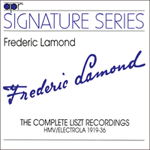 Frederic Lamond - The complete Liszt recordings, HMV/Electrola 1919-36 Frederic Lamond - The complete Liszt recordings, HMV/Electrola 1919-36‘I suggest you look in this particular disc for something of Lamond’s greatness’ (MusicWeb International)» More |
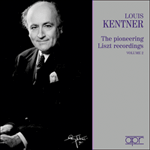 Louis Kentner – The pioneering Liszt recordings, Vol. 2 Louis Kentner – The pioneering Liszt recordings, Vol. 2'Excellently transferred from 78s dating from 1939-59, this selection ranges from Liszt’s early exuberance to the grim-faced austerity of his final ye ...  BBC Music Magazine» More BBC Music Magazine» More |
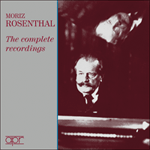 Moriz Rosenthal - The complete recordings Moriz Rosenthal - The complete recordings‘Rosenthal had an inimitably seductive manner of playing … with Ward Marston’s superb restoration and remastering, APR’s exemplary annotation and ... ‘The artistry of Moriz Rosenthal (1862-1946) arguably stands head and shoulders above all recorded Liszt pupils’ (Classics Today)» More |
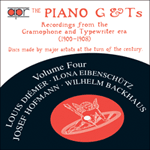 The Piano G & Ts, Vol. 4 - Diémer, Eibenschütz, Hofmann & Backhaus The Piano G & Ts, Vol. 4 - Diémer, Eibenschütz, Hofmann & Backhaus |
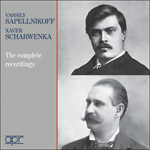 Vassily Sapellnikoff & Xaver Scharwenka - The complete recordings Vassily Sapellnikoff & Xaver Scharwenka - The complete recordingsVassily Sapellnikoff (1868–1941) and Xaver Scharwenka (1850–1924) were among the earliest generation of pianists to record, and on this ground alone it is surprising that their complete recordings have never before been transferred for modern list ...» More |
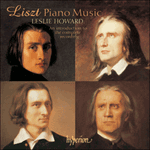 Liszt: Piano Music Liszt: Piano Music |

